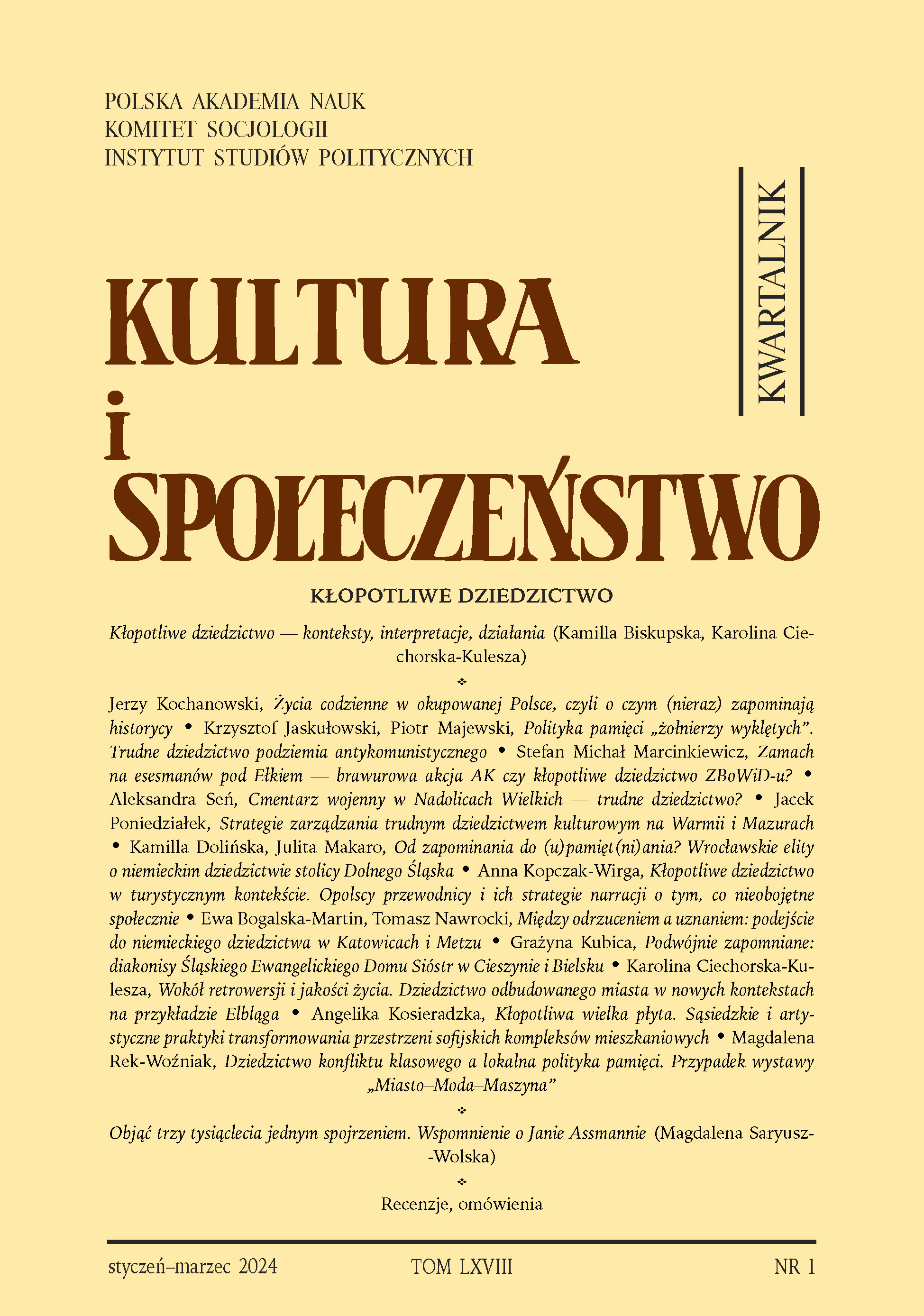ŻYCIA CODZIENNE W OKUPOWANEJ POLSCE, CZYLI O CZYM (NIERAZ) ZAPOMINAJĄ HISTORYCY
EVERYDAY LIVES IN OCCUPIED POLAND,
OR WHAT HISTORIANS (SOMETIMES) FORGET ABOUT
Author(s): Jerzy KochanowskiSubject(s): Social history, WW II and following years (1940 - 1949), Fascism, Nazism and WW II, History of the Holocaust
Published by: Instytut Studiów Politycznych PAN
Keywords: Poland; World War Two; occupation; everyday life; city; countryside; wartime economy; Poles; Germans; Jews;
Summary/Abstract: The article presents several possibilities for a slightly different perspective on everyday life (or rather everyday lives) under occupation, one rarely used if at all by researchers. Within the area of German occupation, which from the summer of 1941 covered almost the entire pre-war territory of Poland, the range of differences — both between administrative units (e.g. the General Government, the Reichsgau Wartheland, and the Eastern Borderlands) as well as within them, between city and countryside, between individual social, professional, ethnic and age groups — was vast. The occupation was not static and homogeneous, but diverse and dynamic, full of complex interactions. Based on subject literature, published materials and archives, and the press — both clandestine and official — the article focuses on the following: the situation of Polish officials working for the occupation administration, mobility (both spatial and social — horizontal and vertical), relations between the city and the countryside, the breakdown of social norms, the wartime economy (in which Polish actors had a stronger voice than tends to be believed), and the process of “taming” the occupation, both materially and psychologically. The paper may be treated as an encouragement and invitation to get involved in interdisciplinary, methodologically innovative, and cross-sectional research on Polish society during the Second World War.
Journal: Kultura i Społeczeństwo
- Issue Year: 68/2024
- Issue No: 1
- Page Range: 17-35
- Page Count: 19
- Language: Polish

